Visualizing ALAP/ASAP—Part 1
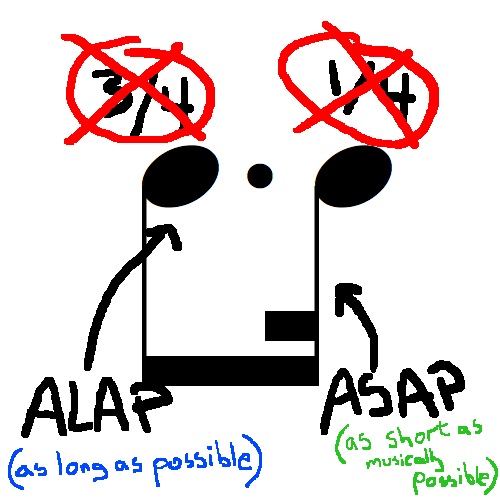
On the bagpipe, we cannot play a note with more volume in order to add expression to a phrase. Indeed, our goal is to play at a steady pressure so that the pitch of the chanter and the drones remains constant. Nor do we have techniques such as staccato or legato available to us on the Highland bagpipe. On the Highland bagpipe, we express our music by holding notes longer than we would normally hold them, playing them As Long As [Musically] Possible (ALAP) and playing contrasting notes As Short As [Musically] Possible (ASAP).
In this post, we discuss the classical methods for counting music, specifically “dot-cuts,” dotted eighth notes followed by a sixteenth note, and address the shortcomings associated with applying classical counting techniques to bagpipe music. We will contrast the traditional methods for counting with methods for counting ALAP/ASAP. We present alternative methods for counting ALAP/ASAP, such as singing the notes while using different syllables. We will discuss the dot-cut rhythm as it occurs in many types of bagpipe music.
If you have a background as an orchestral or band musician, you may have preconceived notions about how to play and count music. When playing a dot-cut, a violinist or a trumpet player might play the dotted eighth note with more volume and play the eighth note softly to add expression to a phrase of music. Varying the volume of the music adds contrast which is pleasing not only to the player but to the listener as well. To play a dot-cut correct rhythmically, the classical musician may subdivide the beat into four sub-beats by counting using the syllables “one-ee-and-uh.” The dotted eighth will occupy “one-ee-and.” The sixteenth not will fall on the “uh.”
If we were to graph this, it would appear like this:
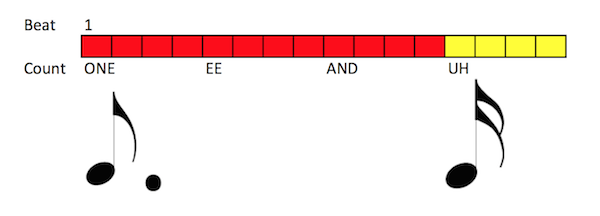
Dot-cuts are found in all types of pipe music and are strongly featured in strathspeys. Consider the second bar of the traditional strathspey "Highland Harry":
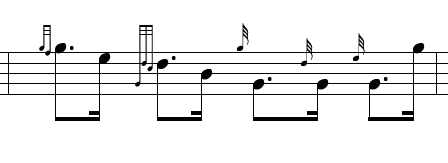
Four dot-cuts in a row! We could certainly count these notes using the classical method. The first high G would be held while we counted the sub-beats “one-ee-and” and the cut sixteenth note on E would occupy “uh.” The throw on D and the D would be held as we counted “two-ee-and” the B would be held for the “uh.” This would work. We could execute the rhythm. Counting in the traditional sense, though, would have drawbacks. There would be little or no contrast between the dot and the cut. The tune would not sound like a strathspey.
In order to add expression to the pieces that we play, we need to emphasize notes by holding them longer than we normally would. In a dot-cut, we hold the dotted eighth note As Long As [Musically or Audibly] Possible, or ALAP. The consequence of holding the first note in a dot-cut ALAP is that we must cut the length of the sixteenth note in order to retain the rhythm. We would play this note As Short As [Musically or Audibly] Possible, or ASAP.
If we were to graph this, the dotted eighth note would occupy fifteen squares in the matrix and the sixteenth note would only occupy one (serendipitously, the sixteenth square).
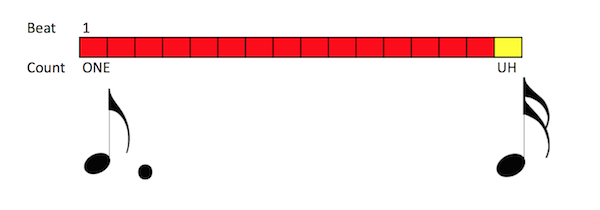
We could count this out by counting “one-ee-and-uh-two-ee-and-uh…” for each square in the matrix. However, that is a lot of counting. Rather than counting, we want to start with the ASAP, as Andrew points out in his discussion on ALAP/ASAP in the tune Catlodge. We want to play the ASAP as short as is audibly possible. From the length of the ASAP, we then deduce the length of the ALAP. In our graph, the ASAP occupies one square of the matrix, thus, working backwards, the ASAP must occupy fifteen squares.
Why do we "deduce" the ALAP? Our tendency is to rush. If we try to execute the ALAP before considering the length of the ASAP, we tend to rush the ALAP and play the ASAP too early. This is especially true if an embellishment, such as a throw on D, follows the ASAP. When we rush the ALAP, we also rush the ASAP, and we end up playing the note following the ASAP before the beat. When we start from the ASAP, playing it as short as is audibly possible right before the following beat, and then deducing the length of the ALAP we can eliminate, or reduce, the tendency to rush.
Rather than counting, pick a syllable, a short syllable, such as "uh." A syllable that you can sing ASAP. Use the short syllable, sing the ASAP as short as is audibly possible and right before the following beat. We can then "deduce" the length of the ALAP. Sing the syllable "dee" to represent the ALAP, stretch it until it is time to sing the ASAP. Sing the ASAP, literally, right before the following beat.
If we revisit Highland Harry, we can sing the melody in a manner similar to the following:
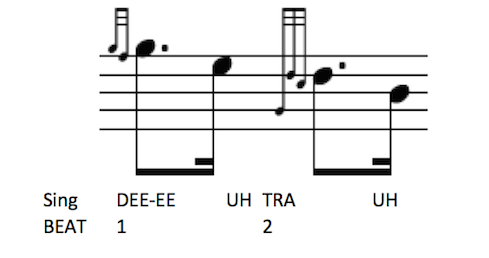
Note that there is no official "canntaireachd" for singing ceol beag. Each piper will use her or his own syllables to represent each of the different notes and embellishments. Many pipers will adopt the method that her is his teacher used. The important point is to use a syllable that will approximate the sound of the embellishment and the note. The more important point, in terms of ALAP/ASAP, is the stretch the ALAP out as long as possible before singing the ASAP. Sing the syllable "uh," literally, right before the second beat.



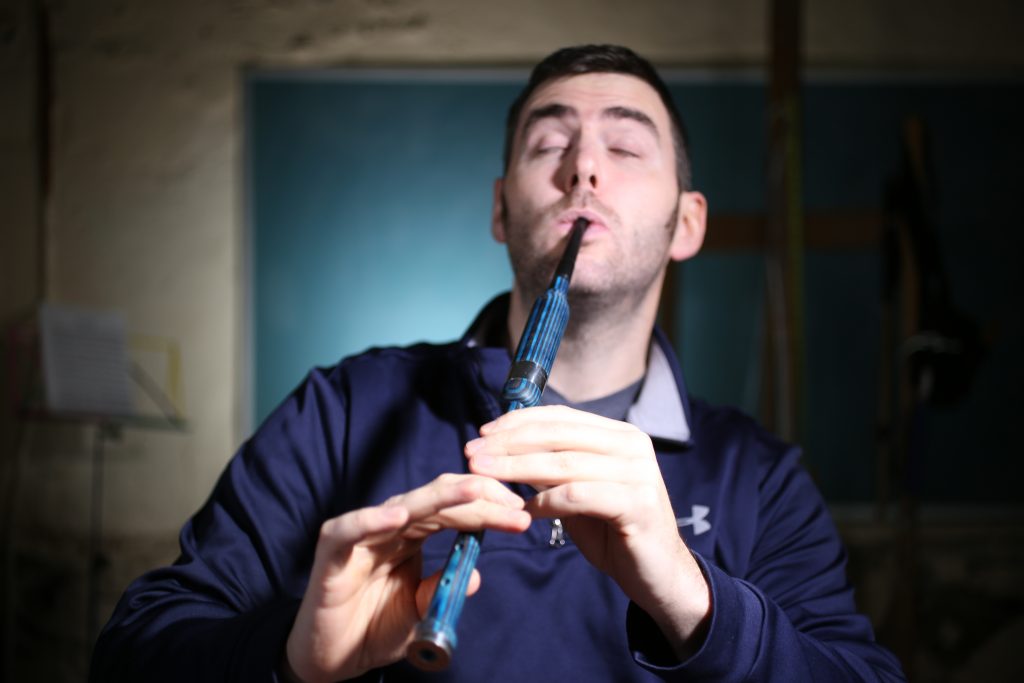


Is there a Part 2 and Part 3 to this series? It seems that these were alluded to in the email I received a while back (7/2/202) and I am trying to catch up with things today
Hi Mathew, They do not appear to have made it over to this site. I'll work on getting these transferred in the near future. In the meantime, there's lots of other materials on the site about ALAP/ASAP including our Fingerwork Fundamentals course which is the definitive reference on it. Sorry for any inconvenience. Cheers, Carl